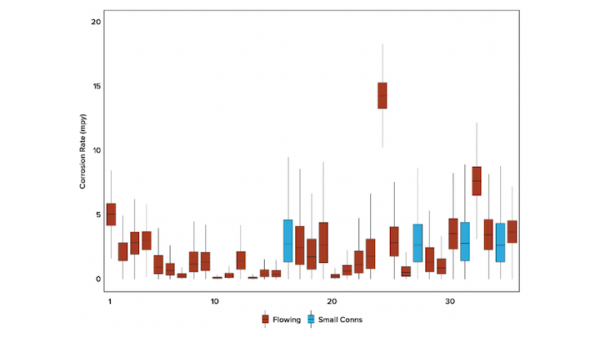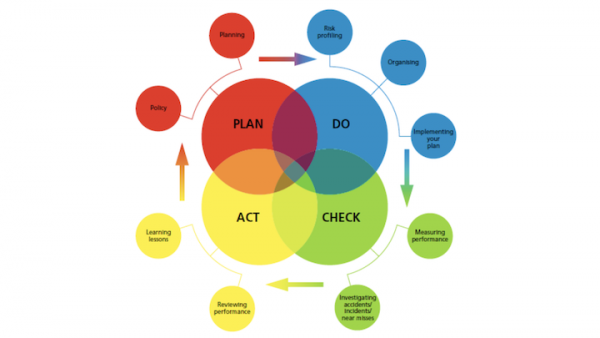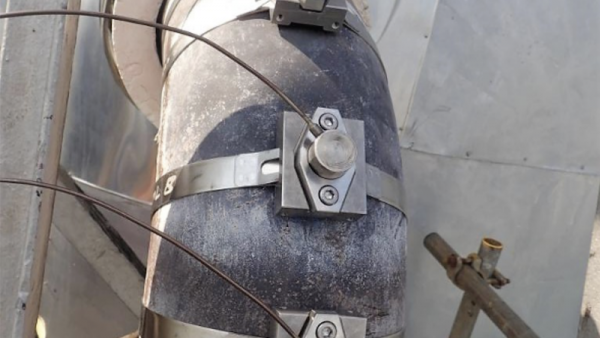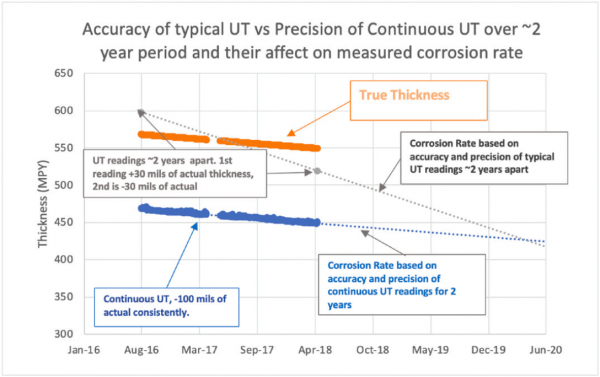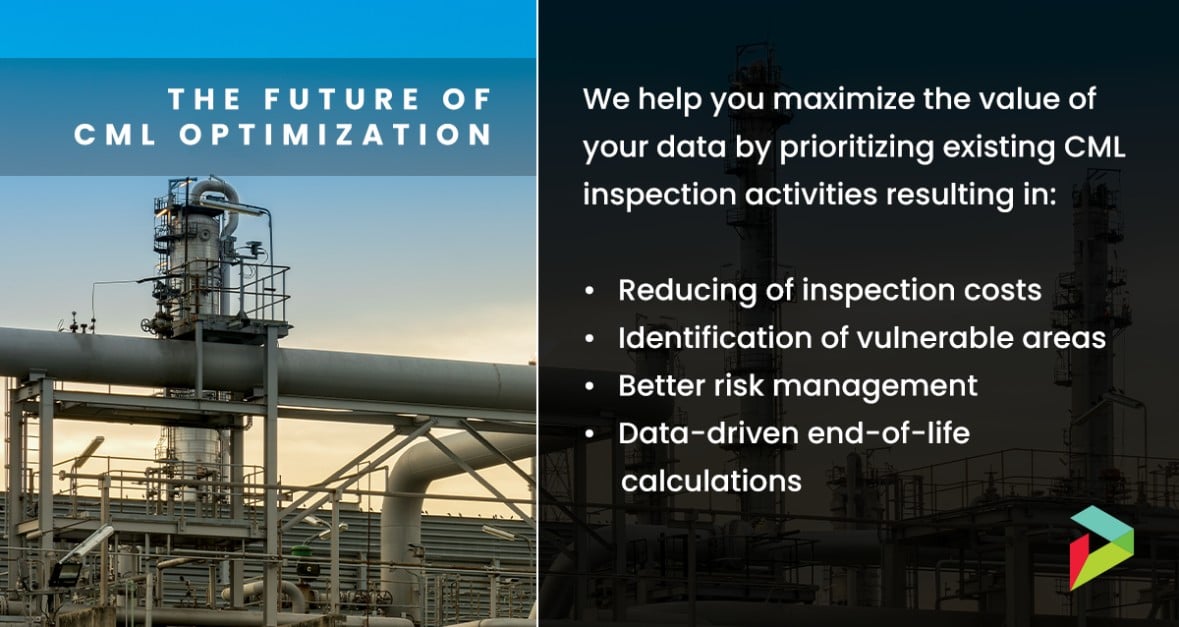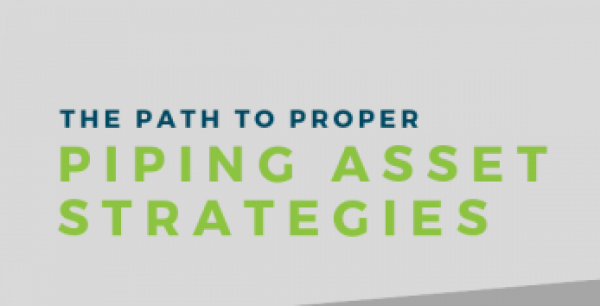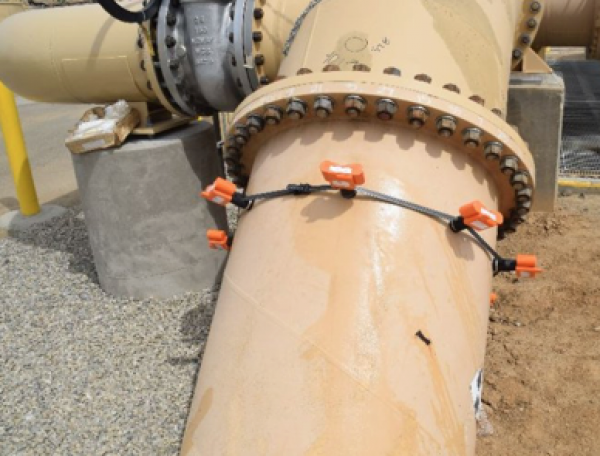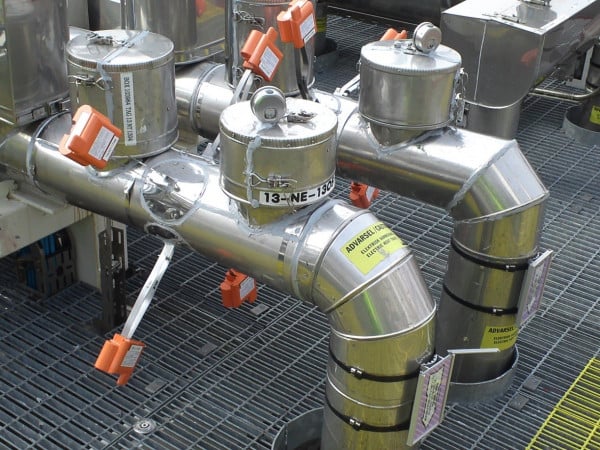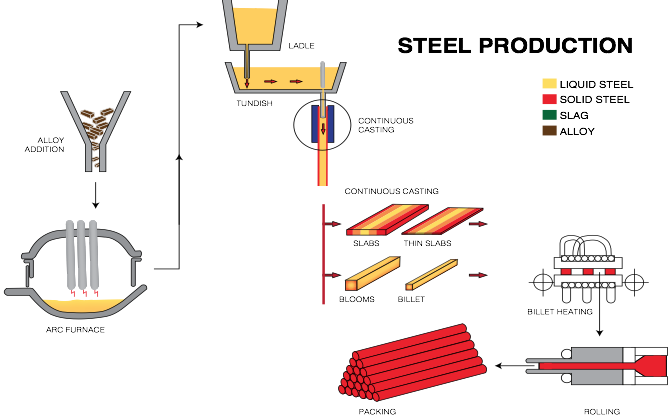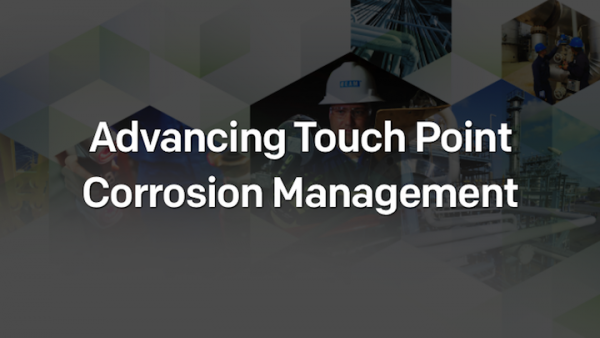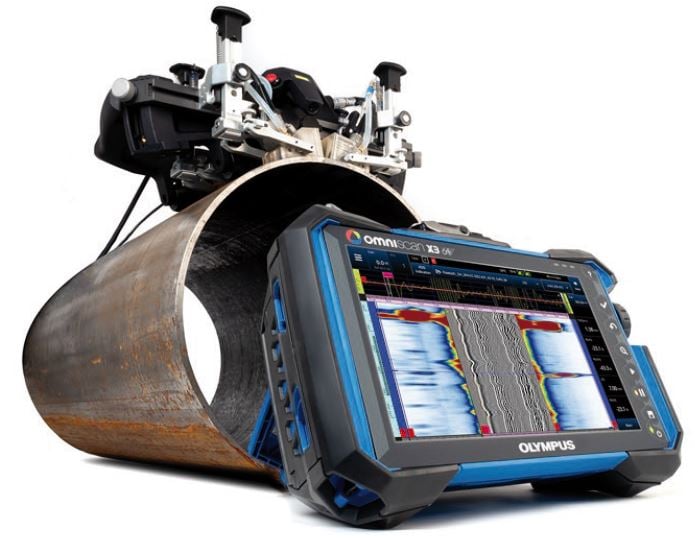Corrosion Monitoring is a process that evaluates and monitors equipment components, structures, process units, and facilities for signs of corrosion. Monitoring programs aim to identify certain conditions in order to extend the life and serviceability of assets while increasing safety and reducing replacement costs. Corrosion monitoring covers all types of corrosion and materials.
The key advantage to implementing corrosion monitoring is to detect early warning signs of corrosion and to determine trends and processing parameters that may induce a corrosive environment. Processing parameters that may need to be altered include temperature, pressure, pH, etc. Additionally, corrosion monitoring serves to measure the effectiveness of corrosion prevention methods in order to determine if different inspection and/or monitoring techniques should be utilized.
Why is it Important?
Corrosion is a major threat to the oil and gas, petrochemical and other process-intensive industries and is responsible for countless of dollars in damage and maintenance costs. Additionally, ageing equipment becomes more susceptible to corrosion and loses its ability to withstand harsh operating environments (e.g. high temperature and pressure). The purpose of a strong corrosion monitoring program is to improve safety, reduce maintenance and inspection costs, and maximize efficiency.
How is Corrosion Monitoring Performed?
Corrosion monitoring covers a broad range of techniques that involve measuring, controlling, and mitigating corrosion. These techniques can be broadly classified into two types: inspection and monitoring.
Inspection Techniques
Before inspection techniques are applied, it’s important to document the operating parameters of equipment that may be increasing the likelihood of corrosion development. These parameters include, but are not limited to, pH, flow rate (velocity), pressure, and temperature of the system.
Next, nondestructive testing (NDT) and inspection techniques are performed to locate and identify the type of corrosion damage. Common NDT methods used to detect corrosion include ultrasonic testing, radiographic testing, and magnetic flux leakage.
Risk-based inspection and fitness-for-service assessments are additional methodologies and processes that can complement a monitoring program. These methods involve qualitative and quantitative approaches and provide information about the current state of equipment and provide information about the remaining life of equipment.
Monitoring Techniques
Once corrosion is identified, corrosion measurement techniques may be used to gather information about the corrosive environment. This is accomplished by the use of probes, which can be mechanical, electrical, or electrochemical devices that monitor changes in corrosivity during operation. Furthermore, corrosion measurement techniques can be used to provide direct and indirect information about a process while on-stream (i.e. during operation) or off-stream. Common corrosion measurements include pH measurements and microbiological analysis. Analytical chemistry techniques can provide information about the amount of dissolved gas (e.g., O2, CO2, and H2S) and the oxidation of metal ions (e.g., Fe2+, Fe3+).
Corrosion monitoring techniques provide direct measurements while the process unit is operating. Common monitoring techniques include the use of corrosion coupons, electrical resistance, linear polarization resistance, and galvanic monitoring. Advanced monitoring techniques include biological monitoring, ultrasonic thickness monitoring, and hydrogen penetration monitoring.
Corrosion coupon (or mass loss coupon) testing is the simplest form of corrosion monitoring that can be applied to all environments (e.g. gases, fluids, and slurries). A coupon is a sample piece that matches the material of equipment to be monitored. The coupons is placed into a process environment and removed after a period of time (e.g. weeks or months). It is then analyzed for: 1) the amount of mass lost, 2) the type of corrosion, and 3) the rate of corrosion.
Electrical resistance probes measure the change in electrical resistance of a component and provide information about metal loss. These probes are able to perform in all environments for long periods of time. Furthermore, they are able to provide periodic (e.g. daily, weekly, monthly) or continuous (e.g. hourly) data about the rate of corrosion.
Linear polarization resistance is an electrochemical technique that works by applying current to an electrode and instantaneously measuring the corrosion rate. The major disadvantage to this techniques is that it can only be performed in conductive media and in aqueous solution.
Galvanic monitoring, also called zero resistance ammetry, is another electrochemical technique that measures galvanic current passing between two dissimilar electrodes. The results provide information about the oxygen content in the media.
Biological monitoring measures the presence of bacteria that consume sulphate and generate sulphuric acid (H2SO4). Sulphuric acid is known to be extremely corrosive to metal equipment.
Ultrasonic thickness monitoring is a very common NDT method that measures the wall thickness of a component over time. This technique is extremely sensitive and is capable of scanning over large surface areas using ultrasonic waves.
Hydrogen penetration monitoring uses probes to measure the amount of hydrogen that dissolves into steel components. In the oil and gas industry, hydrogen is often a by-product in many reactions and can lead to hydrogen induced cracking or hydrogen embrittlement if left untreated.
Overall, monitoring techniques have proven to be successful in reducing facility shutdown time, extending the life of the asset, and saving companies significant costs. It is not uncommon to apply multiple techniques at the same time.
When is Corrosion Monitoring Performed?
Corrosion monitoring plays a vital role throughout the equipment lifecycle. Inspection and monitoring strategies and techniques may change according to the age and condition of equipment. Therefore, inspection and monitoring strategies should be reviewed at specific intervals at the owner-operator’s discretion.
Where is Corrosion Monitoring Performed?
Corrosion remains one of the biggest threats to the petroleum industry. Therefore, corrosion prevention is a primary concern especially in equipment such as flowlines, transportation pipelines, vessels, water systems, boilers, vacuum towers, cooling systems, amine systems, and crude oil systems. These systems are typically the most susceptible to producing corrosive environments.
Relevant Links
Topic Tools
Share this Topic
Contribute to Definition
We welcome updates to this Integripedia definition from the Inspectioneering community. Click the link below to submit any recommended changes for Inspectioneering's team of editors to review.
Contribute to Definition



